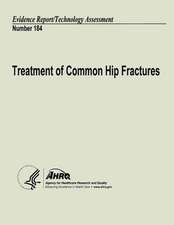Clinical Research in Complementary and Integrative Medicine: A Practical Training Book
Autor Claudia M. Witt, Klaus Lindeen Limba Engleză Paperback – sep 2011
Kein Problem! Clinical Research zeigt Ihnen alle Aspekte verständlich und nachvollziehbar. Sie erhalten einem umfassenden Überblick und praxistaugliche Anleitungen.
Schritt für Schritt erarbeiten und üben Sie die Kriterien und - of course - all in english!
Dieses Buch hat mehr!
Mit dem Code im Buch haben Sie ab Aktivierung 12 Monate kostenlosen Online-Zugriff auf den Buchinhalt und die Abbildungen..*
* Angebot freibleibend
Preț: 269.03 lei
Preț vechi: 379.09 lei
-29% Nou
Puncte Express: 404
Preț estimativ în valută:
51.49€ • 53.55$ • 42.50£
51.49€ • 53.55$ • 42.50£
Carte disponibilă
Livrare economică 17-31 martie
Livrare express 07-13 martie pentru 123.11 lei
Preluare comenzi: 021 569.72.76
Specificații
ISBN-13: 9780702034763
ISBN-10: 0702034762
Pagini: 208
Ilustrații: 50 illustrations
Dimensiuni: 170 x 240 x 10 mm
Greutate: 0.41 kg
Editura: Elsevier
ISBN-10: 0702034762
Pagini: 208
Ilustrații: 50 illustrations
Dimensiuni: 170 x 240 x 10 mm
Greutate: 0.41 kg
Editura: Elsevier
Cuprins
Contents
1 Introduction 1
1.1 What do we mean by complementary medicine in this book? 1
1.2 The science behind clinical medicine 2
1.2.1 Major areas of research 2
1.2.2 Topics in clinical research 2
1.2.3 Evidence-based medicine 3
1.3 Why do we need research on complementary therapies? 3
1.4 Is research into complementary therapies special? 5
1.4.1 Why research into complementary therapies is somewhat different? 5
1.4.2 Strategic approaches to research into complementary medicine 6
1.4.3 Why it is difficult to realize strategic approaches? 6
1.5 Aims, target audience and structure of this book 7
I Theory - Things you should know before embarking on a clinical study 9
2 Basic study design 11
2.1 When is a treatment effective? 11
2.1.1 Why do we need control or comparison groups? 11
2.1.2 Types of controls and comparisons 12
2.1.3 Specific and non-specific effects 14
2.2 Bias - threats to internal validity 15
2.2.1 Prognostic and baseline differences between groups - why randomization is so desirable 15
2.2.2 Differences between groups after treatment has started - why blinding is so desirable 17
2.2.3 Attrition 17
2.2.4 Bias during analysis and reporting 18
2.3 Clinical studies and the real world - external validity 18
2.3.1 The need for balancing internal and external validity 18
2.3.2 Selection of study participants 20
2.3.3 Selection of study interventions 21
2.3.4 Selection of outcome measures 22
2.4 What study design for what purpose? 22
2.4.1 Studies without a control group 22
2.4.2 Studies with a non-randomized comparison group 25
2.4.3 Randomized trials 27
2.5 Establishing an evidence picture 31
3 Basic statistics 33
3.1 Why statistics? 33
3.2 Types of variables and their distribution 33
3.2.1 Categorical variables 33
3.2.2 Continuous variables 34
3.2.3 Categorical or continuous? 34
3.3 Summarizing your data 34
3.3.1 Calculating the mean and the median 35
3.3.2 The distribution of your data 35
3.3.3 Measuring variation within your study population 36
3.3.4 Measuring sampling variation 37
3.3.5 Standard deviation, standard error and confidence interval 38
3.4 Comparing two groups or two time points for one variable 38
3.4.1 Calculating summary measures for dichotomous variables 38
3.4.2 Calculating summary measures for continuous variables 39
3.4.3 Testing a hypothesis 40
3.4.4 Relevance of the p-value 41
Contents
3.4.5 Statistical tests for comparing means 42
3.4.6 Statistical tests for comparing proportions 42
3.4.7 Confidence intervals 42
3.4.8 Type I and type II errors 43
3.4.9 How to deal with multiple testing 43
3.5 Comparing more than two groups for one variable 44
3.5.1 Statistical models and tests for comparing more than two groups for one variable 44
3.6 Comparing two or more groups for more than one variable 45
3.6.1 Correcting for baseline differences 45
3.6.2 Logistic regression and statistical modelling 45
3.7 Analysis populations 46
3.8 Dealing with missing values 46
3.9 Interval hypotheses: equivalence/non-inferiority and superiority 47
II Practice - Planning, managing, analyzing and publishing a clinical study 49
4 Planning 51
4.1 Formulating the research question 51
4.1.1 Why a clear research question is so crucial 51
4.1.2 Practical steps 51
4.1.3 Case studies 54
4.2 Study Protocol 56
4.2.1 What is a study protocol? 56
4.2.2 Develop your study protocol - step by step 56
4.3 Interventions and Controls 59
4.3.1 Theoretical background 59
4.3.2 Define your control and interventions 62
4.3.3 Case studies 64
4.4 Randomization 65
4.4.1 Individual and cluster randomization 65
4.4.2 Practical steps 66
4.4.3 Case studies 70
4.5 What to do if you do not randomize 71
4.5.1 Taking baseline differences into account 72
4.5.2 Matching - practical steps 72
4.5.3 Adjusting analyses for imbalances - practical steps 73
4.5.4 Case study 74
4.6 Blinding 74
4.6.1 Should you go for blinding? 74
4.6.2 Practical steps 76
4.6.3 Case studies 79
4.7 Study participants 81
4.7.1 Who should be included in your study? 81
4.7.2 Practical steps 81
4.7.3 Case studies 83
4.8 Outcome measurement 85
4.8.1 Theoretical background 85
4.8.2 Define your outcome measures and prepare your CRF 89
4.8.3 Case studies on outcomes 91
4.9 Sample size calculation 93
4.9.1 What does sample size calculation mean? 93
4.9.2 Practical steps 94
4.9.3 Case studies 100
4.10 Ethics and regulatory aspects 102
4.10.1 Theoretical background on ethics 102
4.10.2 Getting approval from the IRB/Ethics Committee 103
4.10.3 Regulatory aspects 104
5 Study and data management 105
5.1 Project management 105
5.1.1 Phases of project management 105
5.1.2 Taking notes 105
5.2 Guidelines for clinical trials 106
5.3 Study management 107
5.3.1 Theoretical background 108
5.3.2 Manage your study 109
5.4 Data management 113
5.4.1 Theoretical background 113
5.4.2 Manage your data 116
5.5 Case studies 121
6 Data analysis 123
6.1 Analysing your own data step by step 123
6.1.1 Step 1: Define the analysis populations and the handling of missing values 123
6.1.2 Step 2: Identify the different types of variable 124
6.1.3 Step 3: Clarify what you can calculate from your data 124
6.1.4 Step 4: Choose suitable statistical methods 125
6.1.5 Step 5: Perform the statistical analysis 126
6.1.6 Step 6: Decide how you will present your results 127
6.1.7 Step 7: Interpret your results and draw your conclusions 127
6.2 Case studies 127
7 Publication 133
7.1 General issues 133
7.1.1 Why is publication so crucial? 133
7.1.2 Basic things to keep in mind 133
7.2 Early preparatory work 134
7.2.1 Define your aims 134
7.2.2 Deciding on authorship 134
7.2.3 Selecting a journal 135
7.2.4 Checking instructions for authors 137
7.2.5 Checking general guidelines for reporting 137
7.3 Writing the manuscript 137
7.3.1 Results section 138
7.3.2 Methods section 138
7.3.3 Introduction 139
7.3.4 Discussion 139
7.3.5 Abstract 140
7.3.6 References 140
7.3.7 Additional statements 140
7.3.8 Internal revision 141
7.4 Getting your manuscript accepted 141
7.4.1 Preparing the submission 141
7.4.2 Submitting the manuscript 142
7.4.3 What happens at the journal? 142
7.4.4 Revision 143
7.4.5 After rejection . 143
7.5 After acceptance 144
7.5.1 Proofreading 144
7.5.2 Finally: Publication 144
7.5.3 Dealing with mass media 144
III Putting a clinical study into context 145
8 Qualitative research 147
8.1 Research question and examples 147
8.2 Qualitative approaches 148
8.2.1 Ethnography 148
8.2.2 Field research 148
8.2.3 Case studies 149
8.3 Qualitative methods and types of data 149
8.3.1 Interviews 149
8.3.2 Observation 149
8.3.3 Written documents or pictures 150
8.4 Qualitative data analysis 150
8.4.1 Content analysis 150
8.4.2 Grounded theory 150
8.5 Quality assurance in qualitative research 151
8.6 Combining qualitative and quantitative research methods 151
9 Economic studies 153
9.1 Principles of economic analysis 153
9.1.1 Costing 153
9.1.2 Measuring the benefit 154
9.2 Types of economic evaluations 156
9.2.1 Cost of disease analysis 156
9.2.2 Cost-benefit analysis 157
9.2.3 Cost-effectiveness-analysis 157
9.2.4 Cost-utility analysis 157
9.2.5 Cost-minimization analysis 158
9.3 Examples of economic analysis 158
9.4 Critical appraisal 159
Contents
10 Single-case research 163
10.1 Why case reports are not scientific 163
10.2 Why single-case research is important? 163
10.3 Assessing causality in single cases 164
10.4 Experimental single-case studies 164
10.4.1 General aspects 164
10.4.2 Progressive approaches 165
10.4.3 Repetitive approaches 167
10.5 Observational single case studies 168
10.5.1 Retrospective case studies 168
10.5.2 Prospective case studies 168
10.5.3 Semi-prospective case studies 169
10.6 Cross-roads between research on single cases and groups of patients 169
10.6.1 Best case series 169
10.6.2 Multiple baseline studies 170
10.6.3 Single-case studies embedded in studies of groups of patients 170
10.6.4 Meta-analysis of single case studies 170
11 A brief look at other study designs 173
11.1 Cross-sectional studies/surveys 173
11.2 Diagnostic studies 175
11.3 Etiological and prognostic studies 177
Appendix 181
Index 187
1 Introduction 1
1.1 What do we mean by complementary medicine in this book? 1
1.2 The science behind clinical medicine 2
1.2.1 Major areas of research 2
1.2.2 Topics in clinical research 2
1.2.3 Evidence-based medicine 3
1.3 Why do we need research on complementary therapies? 3
1.4 Is research into complementary therapies special? 5
1.4.1 Why research into complementary therapies is somewhat different? 5
1.4.2 Strategic approaches to research into complementary medicine 6
1.4.3 Why it is difficult to realize strategic approaches? 6
1.5 Aims, target audience and structure of this book 7
I Theory - Things you should know before embarking on a clinical study 9
2 Basic study design 11
2.1 When is a treatment effective? 11
2.1.1 Why do we need control or comparison groups? 11
2.1.2 Types of controls and comparisons 12
2.1.3 Specific and non-specific effects 14
2.2 Bias - threats to internal validity 15
2.2.1 Prognostic and baseline differences between groups - why randomization is so desirable 15
2.2.2 Differences between groups after treatment has started - why blinding is so desirable 17
2.2.3 Attrition 17
2.2.4 Bias during analysis and reporting 18
2.3 Clinical studies and the real world - external validity 18
2.3.1 The need for balancing internal and external validity 18
2.3.2 Selection of study participants 20
2.3.3 Selection of study interventions 21
2.3.4 Selection of outcome measures 22
2.4 What study design for what purpose? 22
2.4.1 Studies without a control group 22
2.4.2 Studies with a non-randomized comparison group 25
2.4.3 Randomized trials 27
2.5 Establishing an evidence picture 31
3 Basic statistics 33
3.1 Why statistics? 33
3.2 Types of variables and their distribution 33
3.2.1 Categorical variables 33
3.2.2 Continuous variables 34
3.2.3 Categorical or continuous? 34
3.3 Summarizing your data 34
3.3.1 Calculating the mean and the median 35
3.3.2 The distribution of your data 35
3.3.3 Measuring variation within your study population 36
3.3.4 Measuring sampling variation 37
3.3.5 Standard deviation, standard error and confidence interval 38
3.4 Comparing two groups or two time points for one variable 38
3.4.1 Calculating summary measures for dichotomous variables 38
3.4.2 Calculating summary measures for continuous variables 39
3.4.3 Testing a hypothesis 40
3.4.4 Relevance of the p-value 41
Contents
3.4.5 Statistical tests for comparing means 42
3.4.6 Statistical tests for comparing proportions 42
3.4.7 Confidence intervals 42
3.4.8 Type I and type II errors 43
3.4.9 How to deal with multiple testing 43
3.5 Comparing more than two groups for one variable 44
3.5.1 Statistical models and tests for comparing more than two groups for one variable 44
3.6 Comparing two or more groups for more than one variable 45
3.6.1 Correcting for baseline differences 45
3.6.2 Logistic regression and statistical modelling 45
3.7 Analysis populations 46
3.8 Dealing with missing values 46
3.9 Interval hypotheses: equivalence/non-inferiority and superiority 47
II Practice - Planning, managing, analyzing and publishing a clinical study 49
4 Planning 51
4.1 Formulating the research question 51
4.1.1 Why a clear research question is so crucial 51
4.1.2 Practical steps 51
4.1.3 Case studies 54
4.2 Study Protocol 56
4.2.1 What is a study protocol? 56
4.2.2 Develop your study protocol - step by step 56
4.3 Interventions and Controls 59
4.3.1 Theoretical background 59
4.3.2 Define your control and interventions 62
4.3.3 Case studies 64
4.4 Randomization 65
4.4.1 Individual and cluster randomization 65
4.4.2 Practical steps 66
4.4.3 Case studies 70
4.5 What to do if you do not randomize 71
4.5.1 Taking baseline differences into account 72
4.5.2 Matching - practical steps 72
4.5.3 Adjusting analyses for imbalances - practical steps 73
4.5.4 Case study 74
4.6 Blinding 74
4.6.1 Should you go for blinding? 74
4.6.2 Practical steps 76
4.6.3 Case studies 79
4.7 Study participants 81
4.7.1 Who should be included in your study? 81
4.7.2 Practical steps 81
4.7.3 Case studies 83
4.8 Outcome measurement 85
4.8.1 Theoretical background 85
4.8.2 Define your outcome measures and prepare your CRF 89
4.8.3 Case studies on outcomes 91
4.9 Sample size calculation 93
4.9.1 What does sample size calculation mean? 93
4.9.2 Practical steps 94
4.9.3 Case studies 100
4.10 Ethics and regulatory aspects 102
4.10.1 Theoretical background on ethics 102
4.10.2 Getting approval from the IRB/Ethics Committee 103
4.10.3 Regulatory aspects 104
5 Study and data management 105
5.1 Project management 105
5.1.1 Phases of project management 105
5.1.2 Taking notes 105
5.2 Guidelines for clinical trials 106
5.3 Study management 107
5.3.1 Theoretical background 108
5.3.2 Manage your study 109
5.4 Data management 113
5.4.1 Theoretical background 113
5.4.2 Manage your data 116
5.5 Case studies 121
6 Data analysis 123
6.1 Analysing your own data step by step 123
6.1.1 Step 1: Define the analysis populations and the handling of missing values 123
6.1.2 Step 2: Identify the different types of variable 124
6.1.3 Step 3: Clarify what you can calculate from your data 124
6.1.4 Step 4: Choose suitable statistical methods 125
6.1.5 Step 5: Perform the statistical analysis 126
6.1.6 Step 6: Decide how you will present your results 127
6.1.7 Step 7: Interpret your results and draw your conclusions 127
6.2 Case studies 127
7 Publication 133
7.1 General issues 133
7.1.1 Why is publication so crucial? 133
7.1.2 Basic things to keep in mind 133
7.2 Early preparatory work 134
7.2.1 Define your aims 134
7.2.2 Deciding on authorship 134
7.2.3 Selecting a journal 135
7.2.4 Checking instructions for authors 137
7.2.5 Checking general guidelines for reporting 137
7.3 Writing the manuscript 137
7.3.1 Results section 138
7.3.2 Methods section 138
7.3.3 Introduction 139
7.3.4 Discussion 139
7.3.5 Abstract 140
7.3.6 References 140
7.3.7 Additional statements 140
7.3.8 Internal revision 141
7.4 Getting your manuscript accepted 141
7.4.1 Preparing the submission 141
7.4.2 Submitting the manuscript 142
7.4.3 What happens at the journal? 142
7.4.4 Revision 143
7.4.5 After rejection . 143
7.5 After acceptance 144
7.5.1 Proofreading 144
7.5.2 Finally: Publication 144
7.5.3 Dealing with mass media 144
III Putting a clinical study into context 145
8 Qualitative research 147
8.1 Research question and examples 147
8.2 Qualitative approaches 148
8.2.1 Ethnography 148
8.2.2 Field research 148
8.2.3 Case studies 149
8.3 Qualitative methods and types of data 149
8.3.1 Interviews 149
8.3.2 Observation 149
8.3.3 Written documents or pictures 150
8.4 Qualitative data analysis 150
8.4.1 Content analysis 150
8.4.2 Grounded theory 150
8.5 Quality assurance in qualitative research 151
8.6 Combining qualitative and quantitative research methods 151
9 Economic studies 153
9.1 Principles of economic analysis 153
9.1.1 Costing 153
9.1.2 Measuring the benefit 154
9.2 Types of economic evaluations 156
9.2.1 Cost of disease analysis 156
9.2.2 Cost-benefit analysis 157
9.2.3 Cost-effectiveness-analysis 157
9.2.4 Cost-utility analysis 157
9.2.5 Cost-minimization analysis 158
9.3 Examples of economic analysis 158
9.4 Critical appraisal 159
Contents
10 Single-case research 163
10.1 Why case reports are not scientific 163
10.2 Why single-case research is important? 163
10.3 Assessing causality in single cases 164
10.4 Experimental single-case studies 164
10.4.1 General aspects 164
10.4.2 Progressive approaches 165
10.4.3 Repetitive approaches 167
10.5 Observational single case studies 168
10.5.1 Retrospective case studies 168
10.5.2 Prospective case studies 168
10.5.3 Semi-prospective case studies 169
10.6 Cross-roads between research on single cases and groups of patients 169
10.6.1 Best case series 169
10.6.2 Multiple baseline studies 170
10.6.3 Single-case studies embedded in studies of groups of patients 170
10.6.4 Meta-analysis of single case studies 170
11 A brief look at other study designs 173
11.1 Cross-sectional studies/surveys 173
11.2 Diagnostic studies 175
11.3 Etiological and prognostic studies 177
Appendix 181
Index 187



















